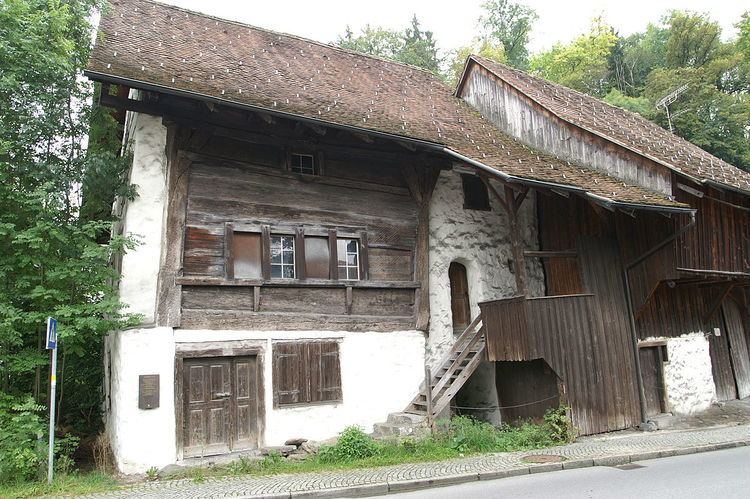 | ||
The method of building wooden buildings with a traditional timber frame with horizontal plank or log infill has many names, the most common of which are piece sur piece (French. Also used to describe log building), corner post construction, post-and-plank, standerbohlenbau (German) and skiftesverk (Swedish). This traditional building method is believed to be the predecessor to half-timber construction widely known by its German name fachwerkbau which has wall infill of wattle and daub, brick, or stone. This carpentry was used from parts of Scandinavia to Switzerland to western Russia. Though relatively rare now, two types are found in a number of regions in North America, more common are the walls with planks or timbers which slide in a groove in the posts and less common is a type where horizontal logs are tenoned into individual mortises in the posts. This method is not the same as the plank-frame buildings in North America with vertical plank walls.
Contents
Other names
European history
“The support of horizontal timbers by corner posts is an old form of construction in Europe. It was apparently carried across much of the continent from Silesia by the Lausitz urnfield culture in the late Bronze Age.” The Lausitz culture is also known as the Lusatian culture and within their territory is an archaeological site and Archaeological open-air museum at Biskupin, Poland, where remnants of such structures were found and reconstructed. The structures found dated from 747-722 B.C and are similar in concept to piece sur piece construction. This historic carpentry is known in southern Sweden (skiftesverk), particularly Gotland where it is also known as bulhus, Germany, Poland, Hungry, Lithuania, Selsia, Switzerland, Austria.
North American history
Some researchers believe this building method was introduced to the United States by Alpine-Alemannic Germans or Swiss, and to by French fur trappers working for the Hudson's Bay Company. And, Others, who have studied the development house building in New France believe that the method was developed endemically in Canada as a local adaption of the half-timbered house, spreading from Québec to the Pacific through the Hudson's Bay Company. The Hudson's Bay Company adopted this style for most of its outposts all the way to the Pacific coast.
Some examples of surviving houses of this structural type are the circa 1809 Cray House in Stevensville, Maryland, 1832 Jacob Highbarger House in Maryland, and the George Diehl Homestead.
Red River Frame was a popular name for the post-and-plank construction technique used in the Red River Colony in the 19th Century. The building style was characterized by a dressed timber structure with a horizontal log infill. The spaces between the logs were filled or 'chinked' with clay and straw. The exterior would either be whitewashed with a limestone/water plaster mixture, or in later years, the exterior would be covered by board siding. This style was popular because it could use smaller trees for logs — the longest trees needed were for the vertical logs. The Farm Manager's House at Lower Fort Garry, the William Brown House at the Historical Museum of St James - Assiniboia, the historical Fur Warehouse at Fort St. James National Historic Site of Canada and Riel House in Winnipeg, Manitoba are excellent examples of Red River Frame construction.
